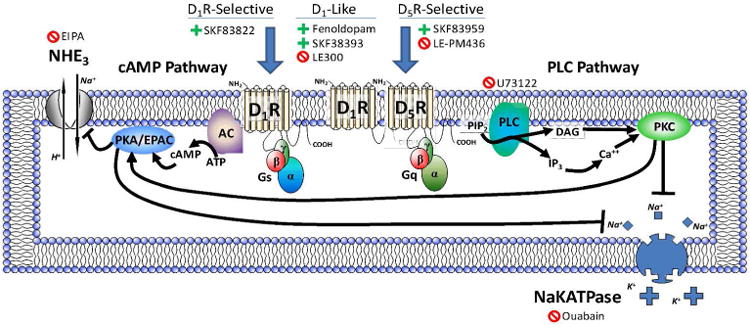Figure 7.

This model lists the D1R and D5R agonists and inhibitors and depicts our proposed pathways and heteromeric structure in relation to signaling and regulation of sodium transport in a human renal proximal tubule cell (RPTC). D1R signaling through adenylyl cyclase (AC) and cAMP and PKA or EPAC (exchange protein activated by cAMP) can inhibit both NHE3 and NaKATPase, while the heteromeric D1R/D5R complex signaling through PLC acts to positively modulate the D1R activity. In RPTCs, SKF83822, which stimulates adenylyl cyclase (AC), may be a D1R selective agonist while SKF83959, which stimulates phospholipase C (PLC), may be a D5R selective agonist and inhibited by LE-PM436, the newly described D5R-selective antagonist. Fenoldopam and SKF38393 stimulate both D1R and D5R while LE300 inhibits both D1R and D5R. U73122 inhibits PLC activity, ouabain inhibits NaKATPase activity and EIPA inhibits NHE3 activity.
